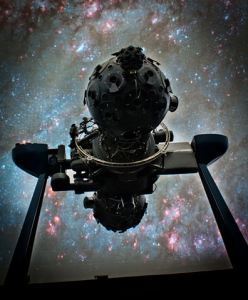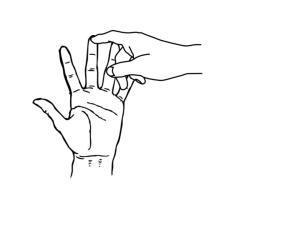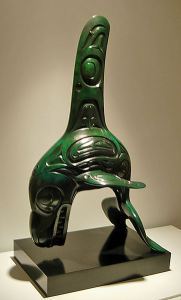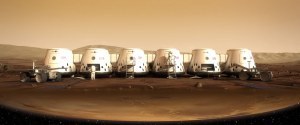Kate Rauner's Blog, page 87
March 25, 2015
Born of Earth and Jupiter – a poem by Kate Rauner

Zeiss projectors, like this one at Kiev Planetarium, allow planetarium visitors to see a scientist’s view of the solar system and the universe.
Two thousand planets have been found
By our current generation.
Five hundred systems, like our own,
Escaped their sun’s damnation.
Most planets are much closer
To their stars and therefore hotter,
With a thousand times thicker air
Than the Sun’s rocky daughters.
And super-Earths are common,
Ten times larger than our own.
Perhaps with days that equal years,
So different from our home.
Most gaseous giant planets
Orbit their stars nearer.
Why we have no super-Earth
At last emerges clearer.
The proto-Jupiter that formed,
To proto-Earth was hostile.
And, five billion years ago,
It stole away our volatiles.
It scrambled inner rocky worlds
And smashed the proto-Earth to bits;
Tossed half of it into the Sun,
The rest then reformed planets.
This left our world, our remnant Earth,
Thinly veiled in wispy air.
Self-organizing, growing life
Could then arise and evolve there.
Surviving heat and pressures vast,
Life on extra-solar worlds
May not resemble any forms
That upon our Earth unfurled.
We may not discern our distant kin
Nor understand life’s game.
It’s hard enough to love our own
And we are all the same.
Kevin J. Walsh and his colleagues detail their findings this week in the journal Nature. space.com. “A wandering Jupiter may have wreaked havoc on the large inner planets of our early solar system, leaving behind an apparently rare configuration of planets.” [csmonitor.com] Whether that rareness holds up as we develop way to discover smaller planets remains to be seen.

March 24, 2015
Better Blogging
Kate Rauner, Hanover, New Mexico, USA
 I recently read a huffingtonpost article on what readers like to see in a posting, as measured by what people share. One element was: a by-line and short bio included with each post. That’s easy to do – so I tried it today and may give it a shot for a while.
I recently read a huffingtonpost article on what readers like to see in a posting, as measured by what people share. One element was: a by-line and short bio included with each post. That’s easy to do – so I tried it today and may give it a shot for a while.
What do you think? Interesting? Helpful? Silly? Annoying?
Kate is a chemical and environmental engineer, and Cold War Warrior (honestly, that’s what Congress called us), who worked in America’s nuclear weapons complex. Now retired on the edge of the southwest’s Gila National Forest with her husband, cats, llamas, and dog, she writes science fiction novels and science inspired poetry. She also shares interesting science news (and finds it odd to write about herself in the third person.)

March 21, 2015
Cold Northeast But Warm Southwest
 “This winter may have brought a deep freeze to much of the northeastern United States ��� including record-breaking snowfall in Boston ��� but it was the planet’s warmest winter on record… according to a newly released report from the National Oceanic and Atmospheric Administration’s (NOAA) National Climatic Data Center.” livescience.com
“This winter may have brought a deep freeze to much of the northeastern United States ��� including record-breaking snowfall in Boston ��� but it was the planet’s warmest winter on record… according to a newly released report from the National Oceanic and Atmospheric Administration’s (NOAA) National Climatic Data Center.” livescience.com
Even if the statistics get a little revision later, that’s still impressive.
We Americans tend to forget there’s a whole southern hemisphere, and they’ve had one hot summer. Of course, one datum does not make a trend, but the trends are equally alarming. But many people don’t see the trends.
Ideology is what makes life worth living for each of us. Our ideology is tied to what we see as the meaning of life. It’s how we decide what���s valuable and what sources of information are valid, and it underlies much of what we do. [don’t-be-a-jerk]
But to insist on viewing the science of climatology as ideologically will be self-defeating. Reality always wins, and we need to start from reality to have any meaningful policy discussions.

March 18, 2015
When Two Plus Two Equals Five – a poem by Kate Rauner
Two plus two is four.
That’s such a narrow view.
It always works in textbooks
Where reality is skewed.
But in the real world,
Anywhere that counts,
Measurements are iffy;
You’ve problems to surmount.
An error band surrounds
Every measurement you take,
It confuses and it obfuscates
The reckonings you make.
Significant figures
Define accuracy,
Where rounding is an issue
And precision is a key.
So if you measure two-point-four,
Don’t round it down to two
And add it next to two-point-three
And think that you are through.
Two-point-four and two-point-three
Sum to four-point-seven;
You may round that up to five
Without a math transgression.
So now you see that four’s
Not always two plus two;
They sometimes sum to five
For large enough values.
Thanks to one of my favorite sites, straightdope.com, where Cecil recently reminded me of an old math joke: 2 + 2 = 5 for large enough values of 2. Here’s another one:
Mathematicians at a conference take a break at the bar.
“This is a real math town,” says one. “Everyone here knows math.”
“I bet our bartender doesn’t know that the integral of X squared is one third X cubed,” says a second mathematician.
They bet and when the bartender comes over to take their orders, they ask her:
What’s the integral of X squared?
She smiles and says: “One third X cubed plus a constant.”
I haven’t tried to make that one into a poem yet.

March 14, 2015
Anthropocene, the Human Epoch

Columbus ends the Holocene
We’re living in the Human Epoch, an age where humanity is profoundly affecting the Earth’s biosphere. We can’t control it – too many of us running off in all directions – but we may be able to precisely date its beginning.
Geologists divide Earth’s history into Eras: Paleozoic or Old Life, when fish, insects, and reptiles first evolved; Mesozoic or Middle Life, which saw flowering plants and the dinosaurs come and (for the non-avians) go; and Cenozoic or New Life, when mammals, including us, arose. Eras are further subdivided, especially the most recent Cenozoic, where we have more detailed knowledge.
“To pinpoint the start of [a] new phase, geologists [look] for a clear signal, described as a ‘golden spike’, that will be captured in rocks, sediments or ice – ‘a real point in time when you can show in a [geological] record when the whole Earth changed.'”
Such a record must be dramatic to be preserved in Earth’s geology, “continental movement, a big asteroid strike, or a major shift in climate,” like the end of the last Ice Age about twelve thousand years ago. That marked the start of the Holocene or Entirely New Epoch. Modern humans had already spread out of Africa, our Neanderthal cousins were gone, and we trembled on the edge of agriculture and the great ancient civilizations.
Some scientists think our Entirely New Epoch is over and the Anthropocene or Epoch of Humanity has begun. Past epochs were determined by finding a step change, a “golden spike,” in the geological record. But today we are seeing a change as it happens.
Some have suggested the 1800s and the Industrial Revolution in Europe, but I’ve run across a better proposal: 1610 AD.
Here’s the reasoning:
Arrival of Europeans in the Americas had an “unprecedented impact on the planet…
“The rapid global trade after that time moved species around. Maize from Central America was grown in southern Europe and Africa and China. Potatoes from South America were grown in the UK, and all the way through Europe to China. Species went the other way: wheat came to North America and sugar came to South America [and deadly diseases entered the Americas from Europe] – a real mixing of species around the world… which is a geologically unprecedented impact, setting Earth off on a new evolutionary trajectory…
“50 million people [in the Americas] died, and most of those people were farmers… this farmland grew back to the original vegetation – tropical forest, dry forest or savannah.
“All that growing vegetation removed enough carbon from the atmosphere to see a pronounced dip in the global atmospheric carbon dioxide concentration that can be seen in ice core records.
“It provides an exact marker of the Anthropocene at 1610 AD, the lowest point of CO2 in the ice-core record at that time.”
So there you have it – the precise date Earth entered the Human Epoch. We don’t know what we’re doing, but we’re sure doing it big-time.
Thanks to the BBC and the Anthropocene Working Group.

March 13, 2015
First Time in 100 Years
I have to share this good news:
“During a recent population survey on Pinz��n Island, a team led by Dr. James Gibbs, Professor of Vertebrate Conservation Biology and Associate Chair of the Department of Environmental and Forest Biology at the State University of New York, discovered ten newly hatched saddleback tortoises, the first Galapagos giant tortoises to be reared in the wild in over a century.” http://geographical.co.uk/nature/wildlife/item/701-historic-birth-for-galapagos-tortoises
When I visited the Galapagos, eliminating introduced species (which were destroying the native life) seemed an overwhelming task. Rats, cats, goats, pigs… But tortoises live a long time and that gave humans a chance to repair the damage. Hurray.

March 11, 2015
She Who Leads – a poem by Kate Rauner

Haida sculpture by Bill Reid
Maiden, time to learn life-skills,
Playful, chaste, and free.
Mother, bounty of the Earth,
Bears responsibilities.
Source of knowledge, aged Crone,
With half your life ahead.
You have swum this way before,
Have rejoiced and suffered dread.
Direct your pod in search of food,
Care now for their destiny.
It’s not of humans that I speak
But sister-whales in the sea.
I enjoy the imagery of the triple moon goddess: “In common Neopagan usage the three female figures are frequently described as the Maiden, the Mother, and the Crone, each of which symbolizes a separate stage in the female life cycle.” I find it fascinating that humans are known to share this division of a woman’s life only with a couple whale species – orcas and short-finned pilot whales. Perhaps it’s not the subcutaneous fat we share (!) but our family structure.

She Who Leads

Haida sculpture by Bill Reid
Maiden, time to learn life-skills,
Playful, chaste, and free.
Mother, bounty of the Earth,
Bears responsibilities.
Source of knowledge, aged Crone,
With half your life ahead.
You have swum this way before,
Have rejoiced and suffered dread.
Direct your pod in search of food,
Care now for their destiny.
It’s not of humans that I speak
But sister-whales in the sea.
I enjoy the imagery of the triple moon goddess: “In common Neopagan usage the three female figures are frequently described as the Maiden, the Mother, and the Crone, each of which symbolizes a separate stage in the female life cycle.” I find it fascinating that humans are known to share this division of a woman’s life only with a couple whale species – orcas and short-finned pilot whales. Perhaps it’s not the subcutaneous fat we share (!) but our family structure.

March 7, 2015
One Way to Mars
Buzz Aldrin, the second man to walk on the Moon, is a long-standing proponent of colonizing Mars. He recently addressed a USA Senate Subcommittee. When talking to politicians, Aldrin emphasizes the need for America to demonstrate its leadership and stay ahead of other nations, but other organizations – and Aldrin himself – have a wider interest in colonizing the Red Planet.
Among other private, non-governmental organizations, Mars One has been in the news. Mars One is making a serious effort to send people, near-term, one-way, to Mars. While there is skepticism, there are also people ready to go.
One reason to colonize Mars is to create a second human home in case something bad happens to Earth. This is a lofty goal, but it’s also abstract. No one thinks any large number of people could be sent to Mars – we Earthlings would all be stuck here on Earth trying to survive the “something bad.”
Colonizing Mars will require a commitment to the abstract – to go to Mars because it’s there, because we can (maybe, soon), or because it’s destiny. Aldrin has written that “humanity is destined to explore, settle, and expand outward into the universe.”
As I sit on the patio of my favorite coffee shop, nibbling a scone and watching people stroll by on a sunny spring day, colonizing Mars seems unlikely, dismaying, and unnerving. But as a Mars One semi-finalist says, “we stagnate here on Earth. We are so predictable… This project is an opportunity to break through… We will be a totally new kind of human, homo sapiens Martianis.”
Good luck, Martianis.
I’ve posted reviews of some of Aldrin’s books here (as “Ponderer”) and here.

March 4, 2015
No Challenge to the Moon
A moon that we see once a year ,
,
A rock in Near Earth Orbit,
Swings past Venus, out to Mars,
Approaching, but it won’t hit.
An asteroid that loops the Sun,
No poets rhyme, no singers croon.
To pass nearby but once a year
Makes no rival to The Moon.
Fancy calls this a moon,
Passing each November.
Named for folk of County Down
And Antrim to remember.
Not many Irish are ensconced
In cosmic objects dim or bright.
But so you are, my neighbor rock,
A name that I can’t say right
From Solvenia –
Kroo-EEN-yuh -
Too faint to see from mountain crest
Who’s seen ya –
KROOee-nyuh –
Tied to the Sun, no earthly guest.
Few dream a’
Cruithne,
The painted people of the west.
While claiming Cruithne is a second moon seems a stretch, it is an interesting object. At half the size of the asteroid that killed off the last non-avian dinosaurs, it would be an existential disaster if it struck us. But don’t worry – it’s not going to impact Earth. Despite its benign orbit, you’d think the dooms dayers would have latched onto it by now. Maybe it’s that tough Gallic name that saves Cruithne from infamy.
“Variations of the name include Cruthen, Crutheni, Cruthin, Cruthini, Cruthne, Cruthni, Cruithni and Cruithini. This is the Gaelic version of the Brittonic term *priten��, both derived from an earlier Insular Celtic form *k��riten��, which is taken to mean ‘painted/tattooed people'” wikipedia





